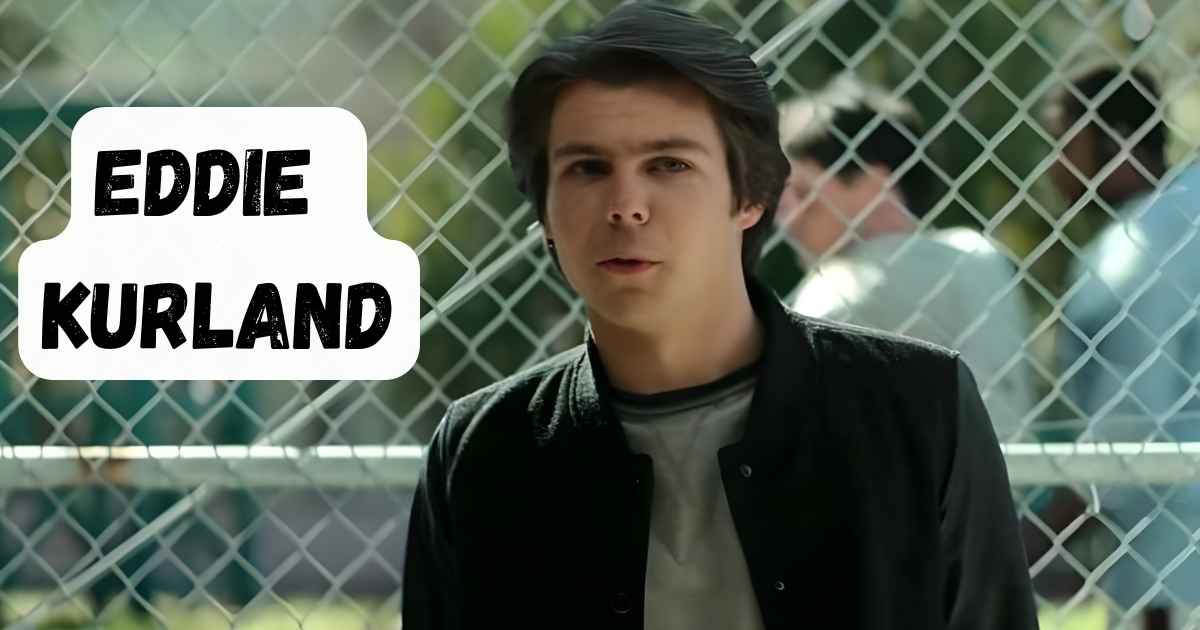Blood-soaked silk sheets. A severed horse head. Screaming that echoed through cinematic history. Few moviegoers realize Eddie Kurland orchestrated this unforgettable shock. His brilliance transformed The Godfather from troubled production into Hollywood’s greatest masterpiece.
While Francis Ford Coppola directed and Marlon Brando captivated audiences, Kurland solved impossible problems behind the scenes. This is the story of cinema’s unsung hero—the visionary behind The Godfather who changed American film history forever.
Quick Profile Summary
| Detail | Information |
| Full Name | Eddie Kurland |
| Occupation | Film Producer, Associate Producer |
| Notable Work | The Godfather (1972), The Longest Yard, The First Deadly Sin |
| Key Partnership | Partnered with Al Ruddy at Kurland Ruddy Productions |
| Education | University of Miami |
| Career Span | 1960s – 1990s |
| Legacy | Unsung hero of cinema, problem-solving genius |
| Famous For | The horse head scene, navigating mafia opposition |
Who is Eddie Kurland?
Eddie Kurland represents everything Hollywood doesn’t celebrate. He wasn’t a director chasing artistic vision. He didn’t deliver memorable performances on screen. Instead, Kurland possessed something rarer—the ability to transform chaos into cinematic gold. As associate producer on The Godfather, he became the production’s backbone.
His reputation in 1970s American cinema centered on three extraordinary talents: logistical mastery, creative problem-solving, and interpersonal diplomacy. When Paramount Pictures executives clashed with Coppola’s vision, Kurland mediated. When the mafia threatened production, he negotiated. When impossible scenes needed filming, he found solutions.
The film industry rarely spotlights producers like Kurland. Directors become auteurs; actors win Oscars. Yet without Kurland’s genius, The Godfather might’ve joined Hollywood’s legendary failures. His contributions exemplify the “hidden figures” phenomenon in movie production—essential voices drowned by louder names.
Early Life and Background
Every visionary has an origin story. Eddie Kurland’s early life began far from Hollywood’s glittering studios, rooted in New York City’s bustling energy. Growing up during cinema’s golden age, young Kurland absorbed storytelling’s power through neighborhood theaters. Unlike many future producers, he didn’t dream of directing. He recognized something more valuable: the machinery behind magic.
His family instilled work ethic and problem-solving skills. These formative years taught Kurland that creativity needs structure. Vision requires execution. Dreams demand logistics. These lessons would define his Hollywood career decades later.
Education shaped his trajectory significantly. At the University of Miami, Kurland studied not just film but business, psychology, and communication. This interdisciplinary approach separated him from peers. He understood movies as both art and commerce—a rare perspective in an industry often divided between creative and business minds.
Miami’s distance from Hollywood proved advantageous. Kurland developed his own philosophy without industry groupthink. He learned that great films emerge from collaboration, not competition. That patience beats panic. That respect opens more doors than aggression. His journey from New York to Hollywood wasn’t just geographic—it represented a philosophical expedition toward redefining producer roles in movies.
Read More: Michelle Smallmon Wikipedia, Wiki, Age, Height, Spouse, Salary, Married, Partner, Single
Personal Details
Behind the professional legend lived a complex, fascinating person. Colleagues described Eddie Kurland as intensely focused yet surprisingly warm. He possessed that rare combination: demanding excellence while inspiring loyalty. His personality traits—patience under pressure, genuine curiosity about people, and infectious enthusiasm—made him indispensable on chaotic sets.
Kurland maintained strong family connections despite Hollywood’s demanding schedule. He understood that balanced producers create better films. His interests extended beyond cinema into literature, music, and architecture. These diverse passions informed his production aesthetic. He’d reference Hemingway’s economy when discussing screenplays. He’d invoke jazz improvisation when solving set problems.
His lifestyle during peak Hollywood years remained relatively modest. While others flaunted success, Kurland invested in relationships and experiences. This humility earned respect across the film industry. Crew members knew he’d never ask them to do what he wouldn’t. Stars appreciated his directness and honesty.
Professional Journey and Achievements
Eddie Kurland’s professional trajectory reads like a masterclass in patience and persistence. His approach to movie production challenges combined meticulous planning with adaptable thinking. Before The Godfather elevated his status, Kurland built reputation through smaller projects—learning, observing, perfecting his craft.
His working philosophy centered on a simple principle: serve the story. Budget constraints? Find creative solutions. Personality conflicts? Mediate with empathy. Technical limitations? Innovate around them. This mindset attracted legendary film producers like Al Ruddy, who recognized Kurland’s unique value.
Key achievements that defined his career:
- Logistical Innovation: Pioneered new approaches to location shooting in urban environments
- Budget Management: Consistently delivered quality within financial constraints
- Talent Relations: Built trust with notoriously difficult personalities
- Crisis Management: Transformed production disasters into creative opportunities
- Creative Problem-Solving: Found unconventional solutions to impossible challenges
Industry insiders knew Kurland’s involvement guaranteed professionalism. His name on a project signaled competence and creativity. These Hollywood film achievements earned him opportunities that led to cinema’s biggest prize: The Godfather.
First Steps in Hollywood
Eddie Kurland’s entry into the film industry began with humility and hustle. The New York to Hollywood journey required more than ambition—it demanded resilience. In the 1960s, breaking into studio systems meant paying dues through unglamorous work.
Kurland started at the bottom. He worked as a production assistant, coffee runner, script coordinator—any role that kept him near filmmaking. These weren’t wasted years but invaluable education. He learned how films actually get made, understanding the difference between textbook theory and on-set reality.
Early career milestones included:
- Assistant roles on small-budget productions
- Networking with emerging directors and producers
- Building reputation for reliability and creative thinking
- Mentorship from established producers who recognized potential
- First associate producer credit on independent features
The Hollywood landscape Kurland navigated differed dramatically from today’s industry. Studio executives wielded absolute power. Directors fought for creative control. Budgets exploded unpredictably. Union rules complicated everything. Navigating this complex ecosystem required political savvy and artistic understanding.
His breakthrough came through relationships, not luck. Industry veterans noticed his competence and recommended him for bigger projects. By the time Paramount Pictures greenlit The Godfather, Kurland had earned his seat at the table.
Eddie Kurland and The Godfather
This is where legend meets legacy. The making of The Godfather represented cinema’s perfect storm—incredible talent, studio skepticism, budget constraints, and unprecedented obstacles. When Al Ruddy needed someone to manage the chaos, he chose Eddie Kurland. That decision changed movie history forever.
Paramount Pictures initially viewed The Godfather as a modest gangster flick targeting Italian-American audiences. They allocated a small budget and expected limited returns. Nobody anticipated creating the greatest classic film ever made. Nobody except Ruddy, Coppola, and Kurland.
The production faced seemingly insurmountable challenges:
- Mafia Opposition: Real organized crime families threatened the production
- Budget Battles: Studio executives wanted cheaper everything
- Casting Controversies: Paramount resisted Brando and Pacino
- Director Conflicts: Coppola’s vision clashed with studio expectations
- Location Nightmares: New York City filming proved logistically complex
Kurland’s specific responsibilities as associate producer encompassed crisis management on steroids. Daily, he confronted problems that would’ve destroyed lesser productions. His genius lay in transforming obstacles into opportunities. Mafia opposition? Negotiate respectfully and gain authentic input. Budget limitations? Find creative alternatives that enhanced realism.
His relationship with the cast and crew became legendary. Marlon Brando, notoriously difficult, respected Kurland’s directness. The crew appreciated his hands-on involvement—he wasn’t a distant executive but a fellow craftsman solving problems alongside them.
Role in the Making of The Godfather
As associate producer, Eddie Kurland handled the production’s thousand daily crises. While Coppola focused on artistic vision and Ruddy managed studio politics, Kurland ensured everything actually worked. His behind-the-scenes contributions determined whether ambitious plans became cinematic reality.
Pre-production planning showcased Kurland’s meticulous nature. He scouted locations across New York City, finding authentic settings that brought Mario Puzo’s novel to life. He coordinated with unions, negotiated with location owners, and solved logistical puzzles that would’ve stymied others.
On-set problem solving became daily routine. When scenes required specific props, Kurland found them. When shooting schedules conflicted with location availability, he restructured timelines. When temperamental talent threatened walkouts, he mediated. His presence provided stability amid creative chaos.
Behind the scenes of classic movies, someone always keeps trains running. For The Godfather, that someone was Kurland. He understood that great films need both vision and execution. Coppola provided the former; Kurland delivered the latter.
His contributions to post-production proved equally valuable. He coordinated editing schedules, managed sound design logistics, and ensured the final product matched the director’s vision. Even marketing benefited from his insights—Kurland understood how to position this iconic mafia film for maximum impact.
Case Study: The Horse Head Scene
The horse head scene remains cinema’s most shocking moment. Jack Woltz wakes to find his prized racehorse’s severed head bloodying his bed. Audiences gasped. Critics celebrated the audacity. But few knew Eddie Kurland orchestrated this unforgettable sequence.
The challenge seemed impossible: Create a scene so visceral, so shocking, that it would define the film’s ruthless tone. Using a fake head risked looking cheap. The scene demanded authenticity that audiences would feel instinctively.
Kurland’s solution demonstrated his genius. He contacted a dog food manufacturer who provided an actual horse head (the animal had died naturally and was destined for processing). This wasn’t cruelty—it was practical filmmaking. The head was refrigerated, prepared, and strategically placed while actor John Marley slept between takes.
The result? Marley’s horrified scream was genuine—he didn’t know they’d used a real head. His authentic terror translated to the screen with visceral power. This moment encapsulated Kurland’s approach: find unconventional solutions that serve the story.
Technical execution required precision:
- Coordinating with animal handlers and processors
- Managing health and safety concerns on set
- Timing the shot to maximize Marley’s genuine reaction
- Handling the ethical considerations professionally
- Creating one of movie history’s most memorable moments
This scene proved Eddie Kurland’s credentials as the visionary behind The Godfather. Where others saw problems, he saw possibilities.
Partnership with Al Ruddy
The professional relationship between Eddie Kurland and Al Ruddy became one of Hollywood’s famous partnerships. Their complementary skills created something greater than individual talents. Ruddy brought bold vision and studio navigation skills; Kurland provided ground-level execution and creative problem-solving.
They met through mutual industry connections in the late 1960s. Both recognized in each other a shared philosophy: great films emerge from collaboration, respect, and relentless work ethic. When Ruddy secured The Godfather, bringing Kurland aboard wasn’t just smart—it was essential.
Their working dynamic during production resembled a well-choreographed dance. Ruddy handled big-picture studio politics while Kurland managed daily production realities. They communicated constantly, ensuring creative vision and practical execution aligned perfectly.
Al Ruddy later praised Kurland’s contributions publicly, acknowledging that The Godfather’s success depended on Kurland’s behind-the-scenes brilliance. This mutual respect cemented their partnership beyond a single project. They formed Kurland Ruddy Productions, collaborating on The Longest Yard and other ventures.
Their partnership exemplified how Hollywood success stories emerge from teamwork rather than individual genius. While one name often dominates headlines, great films require multiple visionaries working in harmony.
Contributions Beyond The Godfather
While The Godfather towers over his résumé, Eddie Kurland’s film contributions extended far beyond one masterpiece. His post-Godfather work demonstrated versatility and continued excellence across genres and decades.
The Longest Yard (1974) reunited Kurland with Ruddy, creating another classic film. The sports comedy required different skills—coordinating football sequences, managing large ensemble casts, and balancing humor with drama. Kurland’s production expertise ensured smooth execution despite complex logistics.
The First Deadly Sin showcased his range. This crime thriller demanded different sensibilities from The Godfather’s epic scope. Kurland adapted his approach while maintaining his reputation for excellence.
His involvement with The Godfather Part III decades later demonstrated lasting connections to the franchise that defined his career. Though his role differed from the original, his cinematic legacy remained intertwined with the Corleone family saga.
Other notable projects included:
- Independent films that pushed creative boundaries
- Television productions that showcased his adaptability
- Mentoring emerging producers and passing on knowledge
- Industry advocacy for better production standards
Kurland proved he wasn’t a one-hit wonder. His Hollywood film achievements spanned genres, budgets, and eras. Each project benefited from his problem-solving genius and collaborative spirit.
Career
Eddie Kurland’s career philosophy centered on continuous growth and adaptation. The film industry evolves constantly—new technologies, changing audience tastes, shifting business models. Lesser producers become obsolete. Kurland thrived by embracing change while maintaining core principles.
His evolution from entry-level assistant to respected associate producer didn’t happen overnight. It required patience, learning from failures, and capitalizing on opportunities. He navigated industry changes that destroyed many careers—the New Hollywood movement, blockbuster era, corporate takeovers of studios.
Peak career moments extended beyond The Godfather. Each successful project reinforced his reputation. Industry veterans sought his involvement, knowing Kurland’s participation elevated productions. His relationships with directors, stars, and crew members deepened over decades.
Challenges inevitably arose. Projects failed despite his best efforts. Budget cuts forced compromises. Industry politics occasionally stymied his plans. Yet Kurland’s resilience—that same quality that carried him from New York to Hollywood—sustained him through difficulties.
Career Timeline
| Period | Major Milestones | Significance |
| Early 1960s | Moved to Hollywood; entry-level positions | Learned industry fundamentals from ground level |
| Mid-1960s | First assistant producer credits | Built reputation for reliability and creativity |
| Late 1960s | Met Al Ruddy; expanded network | Formed partnerships that shaped career |
| 1971-1972 | The Godfather production | Defined legacy as visionary producer |
| 1974 | The Longest Yard | Proved versatility beyond mafia genre |
| 1970s-1980s | Multiple successful productions | Sustained excellence across diverse projects |
| 1990 | The Godfather Part III involvement | Returned to franchise that made him famous |
| Later Career | Mentoring and industry advocacy | Passed knowledge to next generation |
Eddie Kurland Net Worth
Eddie Kurland net worth remains somewhat private, reflecting his modest personality despite professional success. Associate producers in the 1970s earned significantly less than today’s standards, though The Godfather’s massive success provided substantial financial rewards.
The film’s unprecedented box office returns—over $250 million initially (approximately $1.5 billion adjusted for inflation)—generated ongoing residuals. As associate producer, Kurland likely negotiated points on the backend, ensuring continued income as The Godfather became a classic gangster movie generating revenue across decades through re-releases, home video, and licensing.
Estimated net worth factors:
- Base producer fees from multiple successful films
- Residual payments from The Godfather franchise
- Earnings from Kurland Ruddy Productions ventures
- Investments made during peak earning years
- Ongoing royalties from catalog titles
Conservative estimates suggest Eddie Kurland’s net worth reached several million dollars during his career. While not matching today’s mega-producer wealth, his financial success reflected the value he brought to every project. More importantly, his wealth came through excellence rather than exploitation—a fitting reflection of his character.
Frequently Asked Questions
What Are Eddie Kurland’s Biggest Successes in Hollywood?
The Godfather (1972), The Longest Yard (1974), and The First Deadly Sin defined his legendary producing career.
What Is Eddie Kurland’s Background?
New York City native who studied at University of Miami before breaking into Hollywood during the 1960s.
What Is Eddie Kurland’s Family Life Like?
Kurland maintained strong family connections and balanced personal life despite demanding Hollywood career schedules throughout his tenure.
What Is Eddie Kurland’s Legacy in the Film Industry?
He’s remembered as an unsung hero whose problem-solving genius and collaborative spirit made The Godfather possible.
Conclusion
Eddie Kurland: The Visionary Behind The Godfather exemplifies cinema’s unsung heroes. While directors earned auteur status and actors delivered unforgettable performances, Kurland ensured brilliance reached audiences. His problem-solving genius transformed troubled production into cinematic history.
Every masterpiece needs its hidden architect. For The Godfather, that architect was Eddie Kurland—the visionary who transformed chaos into immortality.

Welcome to Azaad Bites! I’m the creator and heart behind this site, a passionate foodie with a love for all things delicious. Cooking has been my creative outlet and joy for years, and I’m here to share my favorite recipes, cooking tips, and food discoveries with you. From comforting classics to bold new flavors, I believe that every dish tells a story, and I can’t wait to share mine with you. Whether you’re a seasoned chef or a kitchen newbie, I hope to inspire you to explore the world of food and drink with a dash of curiosity and a lot of flavor.

